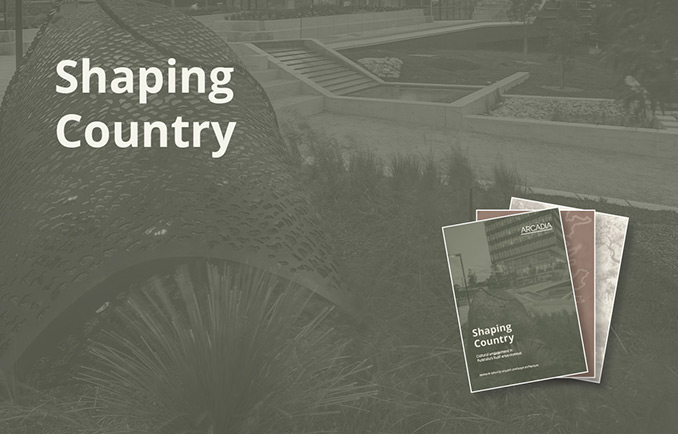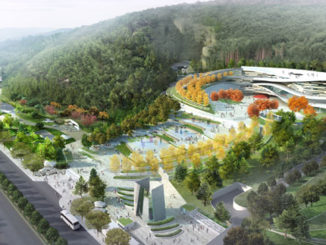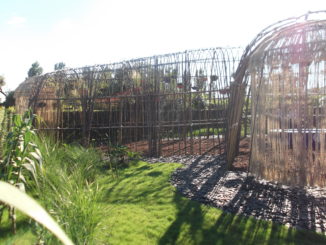
An Indigenous-led Country-centred design approach is needed for Australia’s built environment industry to progress past ornamental recognition of Indigenous Australians, and end the colonisation of spaces, according to a new report from Australian landscape architecture and urban design practice, Arcadia.
While many architects and developers have made significant progress in recent years, the report Shaping Country: Cultural Engagement in Australia’s Built Environment, identified the need to significantly grow meaningful representation from First Nations knowledge holders on major projects, while breeding an industry-wide culture of striving to exceed design guidelines and legislation, rather than the cultural ‘box-ticking’ approach which persists today.
Tying into this year’s NAIDOC Week theme ‘Heal Country!, Arcadia collaborated with Budawang/Yuin researcher and spatial and cultural designer Dr Danièle Hromek and Yuin woman Kaylie Salvatori, Arcadia’s Indigenous Landscape Strategist, to develop the report.
“Until the processes we use to design our built environments are adapted to include community, culture and Country, colonisation of our spaces will continue,” Dr Hromek said. “First Peoples originated from Country and are therefore essential interpreters to truly knowing a place.”
“Country has a relational methodology, meaning that we, people, are related to all things through Country, including flora, fauna, earth, rocks, winds, elements – from the most diminutive microbe to the amorphous ocean. This methodology of relationships keeps everything in balance, as no single entity is privileged above another. This includes humans. The methodology of Country can – and, I believe, must – be incorporated into the methodology of built environment design.”
Currently, there are very few First Nations professionals practising in the built environment across the entire Country. This is one of the issues raised in the report and Arcadia is calling for wider industry action to help encourage more First Nations people to consider a career in this field.
“I cannot speak for all Indigenous people,” said Arcadia’s Indigenous Strategist Kaylie Salvatori – one of the few First Nations women practising Landscape Architecture in NSW. “There is a lot of pressure on me to have all the answers or know all the intricacies of my culture. But even I am still learning. We need more First Nations people on design teams not only so that they can represent the interests of more Indigenous groups, but also so they can forge trusted relationships with local communities.”
Arcadia’s Founding Principal Alex Longley said his practice had been honing its approach to cultural engagement and design over the last decade, and he believes the industry is at a real turning point.
“The field of landscape architecture is something of a front-runner in terms of pre-reconciliatory progress, as there is synergy between our design philosophies and the way First Peoples think about and respond to the land.
“We hope that by providing this Report, we can spark conversation and action beyond just landscape architecture and into the wider built environment industry, so every person in the sector recognises the role they have to play in making progress,” said Mr Longley.
The Shaping Country report addresses five key ideas:
- Engaging with Knowledge Holders: what gets in the way, how to engage and examples of collaboration processes
- Engaging with Country – healing the land, project case study
- Engaging with Industry – achieving ‘Better Placed’ design, how culture impacts commercial outcomes
- What to do when you can’t engage
- Where to next – actions for the built environment
Arcadia has delivered nearly 900 projects over the past decade, honing a holistic design strategy that nurtures and celebrates human experience, Connection to Country and collaboration with First Nations people.
A recent example of this was the landscape and public realm for the Susan Wakil Health Building, on Gadigal country at the University of Sydney, that Arcadia conceptualised and delivered. Arcadia’s award-winning design was an interpretation of the cycle of healing, stirring the body, mind and soul to reflect the Gadigal people’s approach to healing through the engagement of all the human senses in a contemporary setting. This was also reflected in the project’s planting strategy, selecting key plant species for their underlying healing and medicinal elements, signifying the nature of the site’s current use.
To help address the under-representation of First Nations people in the landscape architecture industry, Arcadia has offered scholarships for Indigenous students to study Landscape Architecture at the University of New South Wales since 2017, and last year extended the offer to seven more universities across the country.
Arcadia’s Report Shaping Country: Cultural Engagement in Australia’s Built Environment can be viewed here https://arcadiala.com.au/arcadias-shaping-country-report/



